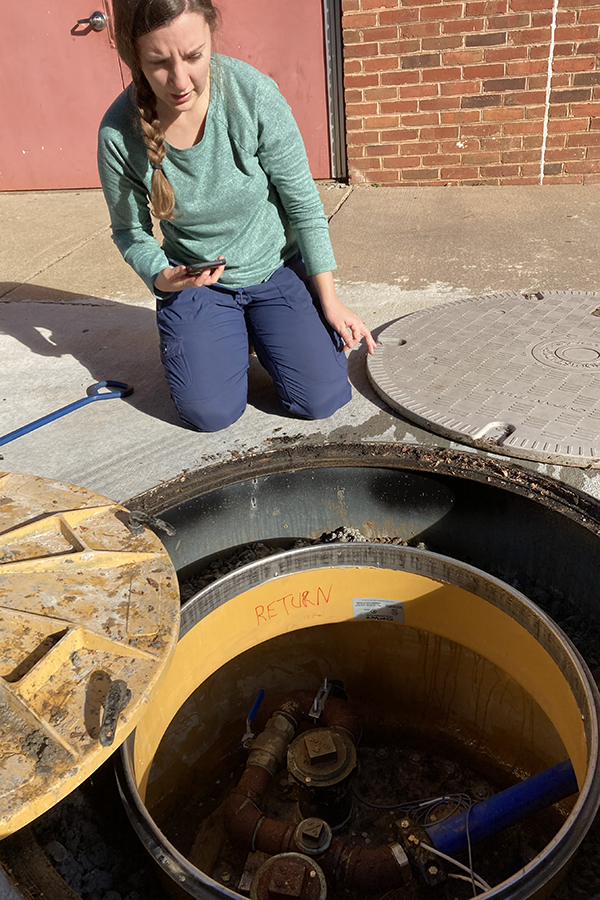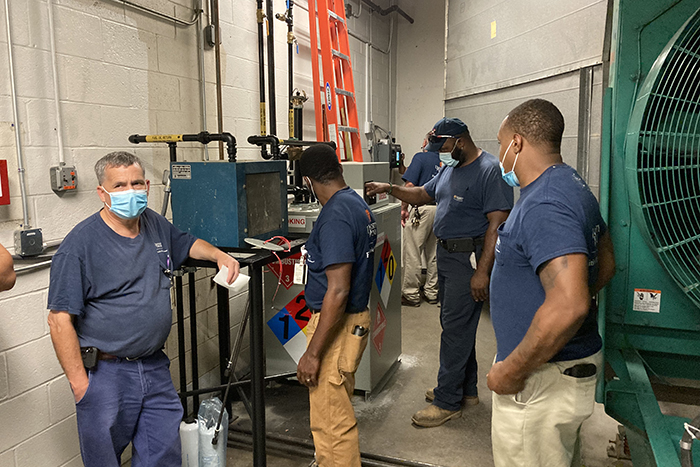
Multiple Facilities Management teams, Environmental Resources and Parking & Transportation collaborated on a project to upgrade the University’s underground storage tanks to meet new, more stringent requirements.
The new regulations aim to reduce the likelihood of a release of fuel from the tanks into the environment through improvements to the overall design, the addition of release detection monitoring systems and routine testing for functional overfill and spill containment as well as of the release detection equipment.
There are 14 regulated underground tanks on Grounds that store fuel. Seven are managed by Health System Physical Plant (HSPP) to run emergency generators, four serve the heat plants and three are managed by Parking & Transportation to fuel motor vehicles.
The Environmental Resources team led the tank upgrade project, which was first started in 2020, providing environmental compliance support and coordination of testing and needed repairs.
Capital Construction & Renovations staff Kevin Silson, Mark Humbertson and Dana Hodges managed the project work on eight of the tanks that support HSPP emergency generators. These generators involved significant monitoring equipment upgrades, two “tank-in-a-tank” retrofits, closure of an underground tank and replacement with an aboveground storage tank, and associated equipment testing.
Automation Services staff connected the HSPP tank monitoring systems to the Building Automation System and set up corresponding email and text alarms. Construction & Renovation Services coordinated the initial round of testing required of the tanks.
Maintenance staff with Health System Physical Plant, Energy & Utilities and Parking & Transportation completed training to be certified as Class B Underground Storage Tank (UST) operators qualified to perform monthly and annual tank walkthrough inspections. Programs & Informatics team members worked with Environmental Resources to update tank asset records and establish preventive maintenance schedules to cover new inspection and testing requirements in AiM.
“The regulated underground storage tank upgrade project and testing has been lengthy and challenging,” said Associate Director for Environmental Resources Kristin Carter. “We have learned a lot in the process and it was a nice opportunity to work with staff across Facilities Management that we haven’t historically had close working relationships with.”


The project included upgrades to this underground storage tank located near the Lee Street Parking Garage. Health System Physical Plant Zone 2 staff members participate in a training session to be certified as Class B Underground Storage Tank (UST) operators qualified to perform monthly and annual tank walkthrough inspections. (Contributed photos)
